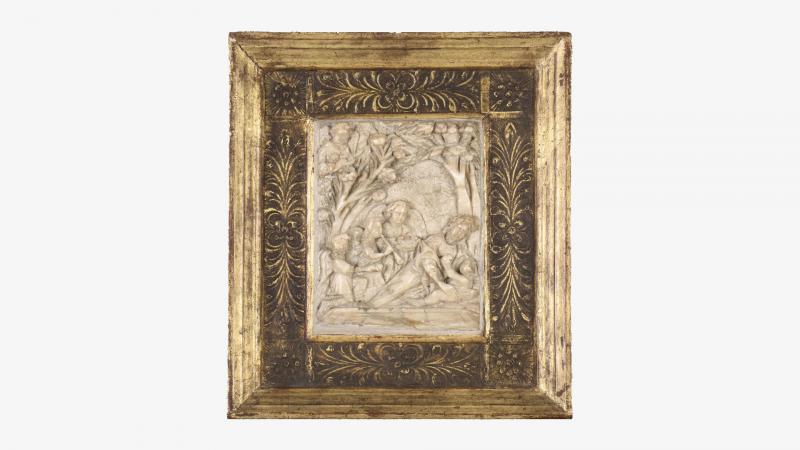Alabaster is a material that has been appreciated by sculptors since ancient times. At the end of the Middle Ages, England produced a large number of bas-reliefs that were mostly exported. This activity ended around 1530, when the people of Mechelen seemed to take over.
The Mechelen alabaster works are thin reliefs with rather small dimensions. Glued onto a board, they are inserted into wooden frames covered with papier-mâché, which are embossed and gilded and sometimes used as small altarpieces. Gold highlights frame the main features. The artist’s monogram is frequently found on the lower chamfer of the relief. The iconography is primarily religious in nature, hence the fact that they are referred to as "devotional reliefs".
Numéro d'inventaire FLORA
GC.REL.02a.1937.30412
